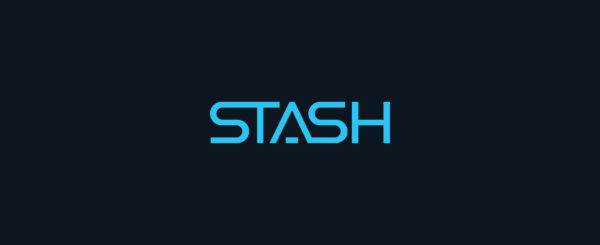Sep 21, 2017
Working from Home? Time Management Tips and Tricks for Freelancers
Here are some helpful tips to keep you sane while working from home.

To a cooped-up office worker, working from home as a freelancer sounds like a dream. After all, what could be better than making your own schedule and working from the couch? You can hit the snooze button, kick back with a coffee instead of a commute, and answer to no one but yourself.
Freelancing or working from home certainly has its joys, but as with any dream, the reality can be shockingly different. One day, you might look up from your laptop and realize that you haven’t left the house or showered in two days. You can’t remember the last time you spoke to another human being. You might be bored, or worse, overworked yet somehow unproductive.
Sound familiar? If so, don’t worry — there’s no need to give up on your freelancing dream.
With a few time management shifts, you can restore order and create much-needed boundaries between your personal and professional life.
Find an activity that requires you to leave the house
When freelancers face the week, it’s often a wide-open expanse of unscheduled hours. There’s a certain freedom in that, but it also creates a dangerous “I have nothing but time” mentality. Without a boss breathing down your neck, it’s all too easy to push off tasks or spend an hour going down an internet rabbit hole.
Before you know it, it’s time for lunch, and then dinner — and you’ve accomplished next to nothing.
If this sounds like you, the solution is to find an activity that imposes a schedule on your day. This might sound counterintuitive, particularly if you went freelance to escape rigid scheduling, but it is absolutely necessary. The most important criteria? The activity must be something that requires you to leave the house.
This is crucial. If you select a task that can be done at home — or worse, one that you can skip without anyone knowing — there’s a good chance you’ll simply push it off or forget about it.
Exercise is a great and productive option. Book and pay in advance for a class at a local gym or start a training plan for a 5K or a half marathon. Alternatively, find something that makes you accountable to other people. This can mean anything from volunteering an hour a day at a community garden or a daily walk with a friend.
This strategy is powerful because it forces you to be aware of time when you’re working from home.
If it’s 9:00 a.m. and you need to be somewhere at noon, you have exactly three hours to get some work done, shower, and get to the event. Suddenly, the day is no longer a black hole of time, and in that three hours, you can accomplish more than you would in a full day of procrastinating.
Follow normal business hours (75% of the time)
During the first year of freelancing, you might find yourself boasting, “I can work whenever I feel like it! I can take the afternoon off to go to the beach, and then spend a couple of hours in the evening getting stuff done.”
This is true, but unfortunately, the rest of the world — as well as most of your social circle — still operates on normal business hours. If you want to be involved in a community group, hang out with your kids, or have cocktails with friends, you’re going to have to respect standard schedules.
Set yourself up for success when working from home by sticking to normal business hours 75% of the time. As often as possible, get up at a reasonable hour and stay focused until lunch. Take a break, and get back to it until late afternoon. In the process, your work will get done, and you can pursue evening activities without guilt.
The remaining 25% leaves plenty of time for afternoon runs and leisurely coffee dates, all without the risk of tanking your income. Plus, on nights when nothing’s going on, you can put in a few evening hours while catching up on your Hulu queue.
When working from home, take weekends off
Every freelancer knows the struggle: it’s impossible to separate from work when your laptop, computer, tablet, and phone are never far away. The deadline for that big project is coming up, there are 10 emails awaiting a reply — you’re not doing anything important right now, so why not put in a few hours of work on a Sunday afternoon?
This is a slippery slope. Before you know it, Monday arrives and you haven’t gotten a proper break. Soon, you feel burnt out. You never get to escape. You never stop thinking about work. Each time Monday arrives, with its influx of emails and requests, you feel tired and beaten down. Suddenly, the freedom of freelancing is gone, replaced by work that is somehow more burdensome and time-consuming than your old 9-to-5.
The solution: take weekends off. On Friday evening, close all documents and programs. Don’t just close internet tabs — log out of all work-related websites and apps. That way, when you open the website on Saturday out of sheer habit, the login page will interrupt the automatic behavior and remind you to stop.
The time you spend doing “nothing important” is absolutely essential. You’re recharging your batteries. Think about something other than work. Relax your mind and body. Give your eyes a break from screens.
By Monday, you’ll go back work feeling rested, relaxed, and most importantly, brimming with mental clarity. Do not underestimate the power of a clear head in freelancing. It allows you to work quickly, efficiently, and happily, so you can put out great products that lead to referrals and a steady stream of work.
If the freedom of freelancing is starting to get you down, don’t worry. With these simple tweaks, you can bring instant order to your wild-and-free schedule. In just one week, you’ll find yourself working more effectively and relaxing more completely, for a better life in and out of work.
Stash Learn Weekly
Enjoy what you’re reading?
[contact-form-7 id="210" title="Subscribe" html_id="default"]Related Articles

The 2024 Financial Checklist: A Guide to a Confident New Year

9 Ways to Celebrate Financial Wellness Month

Budgeting for Young Adults: 19 Money Saving Tips for 2024

The Best Personal Finance Books on Money Skills, Investing, and Creating Your Best Life for 2024

What Is a Financial Plan? A Beginner’s Guide to Financial Planning

How to Save Money: 45 Best Ways to Grow Your Savings





